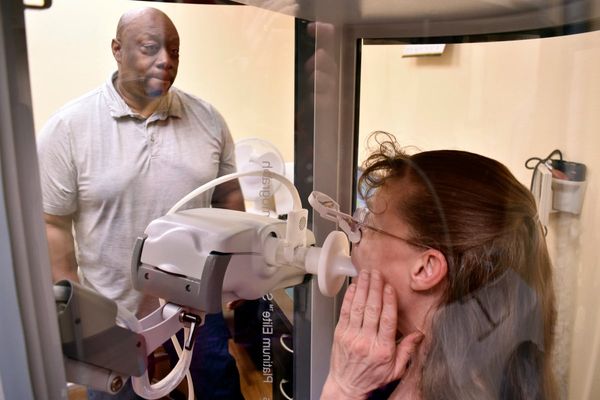
This is the first in a four-part series looking at facets of the pandemic.
The end of the pandemic may be in sight says World Health Organization director-general Dr Tedros Adhanom Ghebreyesus. Although we’re not out of the woods just yet, weekly global COVID-19 deaths have hit the lowest number since the pandemic began.
There are clear metrics for defining a pandemic — from how widespread to how deadly a disease is — but there’s no clear definition for its end.
In this four-part series, Crikey looks at how the end can be defined, how the impacts of COVID are here to stay, and how normality is not the same for everyone.
What’s the situation now?
The past month has seen a steep decline in COVID cases and deaths across the world. Global weekly cases have dropped to about 3.45 million, down from an all-time high of 24 million. About 6.5 million people have died, but deaths are at an all-time low. In Australia, there’s been a 20% drop in new daily cases in the past week alone.
Vaccines are to thank, with 62% of the world’s population fully vaccinated against the disease. Second-generation vaccines — jabs tailored to protect against the Omicron variant instead of the initial Wuhan strain — are being approved and released across the world.
But that doesn’t mean the virus will soon disappear. Although passengers will no longer have to wear masks on public transport in NSW and South Australia, Prime Minister Anthony Albanese announced last week that pandemic leave disaster payments would be extended for as long as mandatory isolation periods were in place, signalling that the effects of the pandemic are here to stay.
Damage, disease and death over behaviour
Do we define the end of the pandemic by measuring the dangers of a virus or by how the public responds to the threat? Is it about transmissibility or complacency?
Deakin University epidemiology chair Professor Catherine Bennett told Crikey that “pandemic” was a trigger word for countries to work together to coordinate their response to infectious diseases.
COVID-19 would no longer be a pandemic when the international community recognised “we no longer need the capacity to respond to a crisis globally, in the same way”, she said — something that would be retrospective. It was less about the disease and more about our ability to manage it.
As with HIV, Bennett said, COVID-19 is a human pathogen that’s here to stay, with the world moving to co-evolve with the virus instead of being in crisis mode — though still alert for transmission upticks.
For University of Queensland infectious disease physician Dr Paul Griffin, the definition is ambiguous: “A pandemic is defined by when we see more transmission than expected normally in a number of locations. So the end is kind of the opposite of that initial definition.”
But we have no baseline for “normal” levels of transmission for the novel coronavirus, he said, and the virus isn’t going anywhere.
“Even when the pandemic … is [declared] over, it’s not going to mean the virus is gone. It’s going to mean it’s still going to be circulating at lower levels, and we’ll still expect to see waves of transmission increase, hopefully, to lower magnitude and less frequently than we’ve seen recently.”
For University of Sydney infectious diseases paediatrician Professor Robert Booy, the definition is a little clearer. For him, it’s not about case numbers but about impact: “Influenza transmits. The key issues are its case fatality rate, its damage, its disease and its death. These spell out whether the virus is no longer a pandemic of severity, rather than an infection that spreads easily.”
A warning on complacency
Ghebreyesus was careful not to signal the end of the pandemic, saying instead that the world needed to sprint to the finish line by focusing on testing, clinical care, vaccines, infection control, rebuilding trust in public health authorities and addressing misinformation.
Booy was even more cautious: “Anyone who says we’re definitely at the end of the pandemic hasn’t learnt from the past two and a half years where the virus continues to surprise and evolve.”
Viruses continuously mutate and evolve, becoming more transmissible but less deadly. Vaccines combined with natural immunity means we’re currently about 10 times less likely to die from COVID than we were at the start of the pandemic, Booy said, and each iteration has fewer mutations than at the start of the pandemic.
But he warned: “There may still be some tricks up the sleeve of the virus.”







